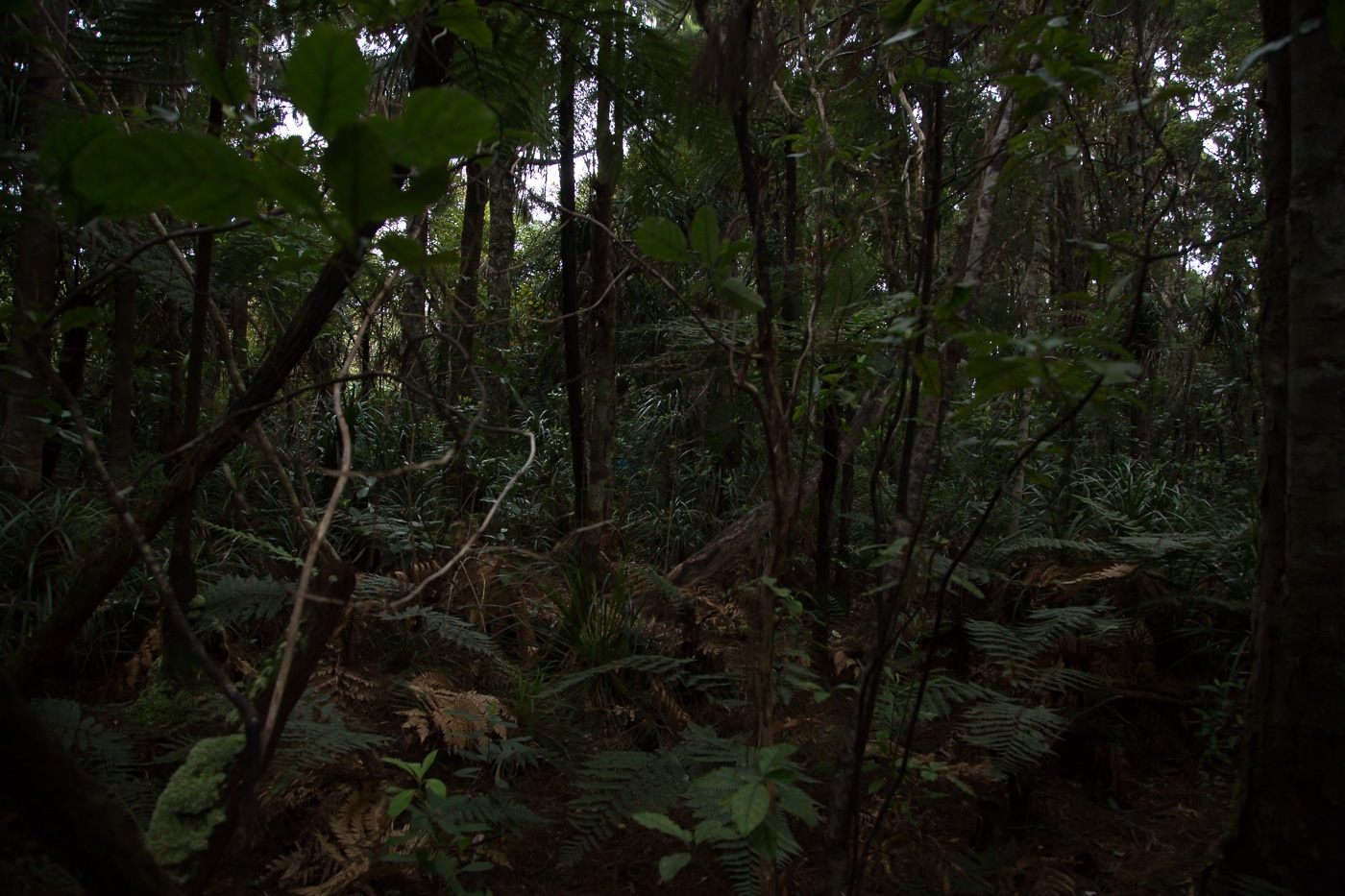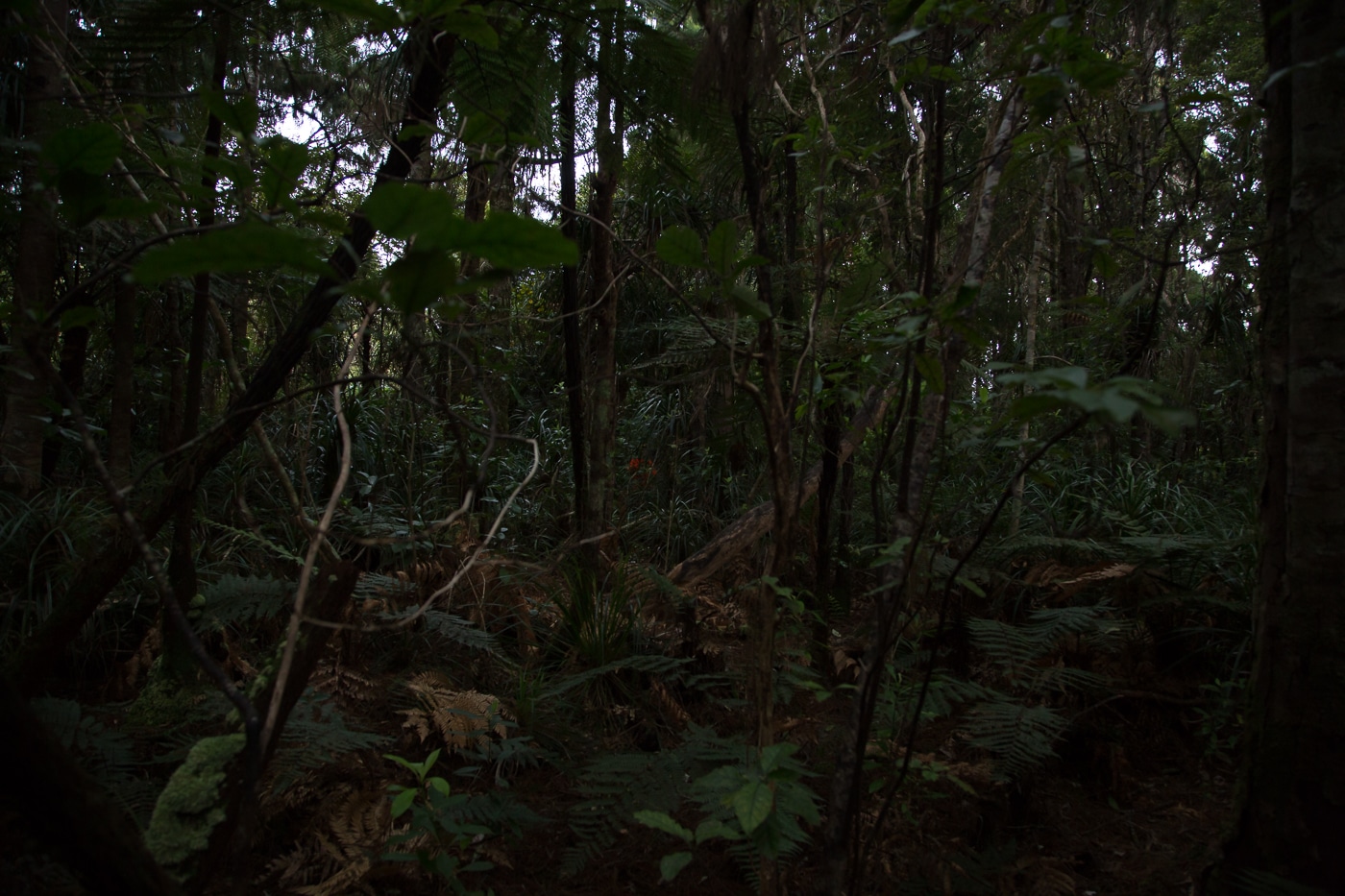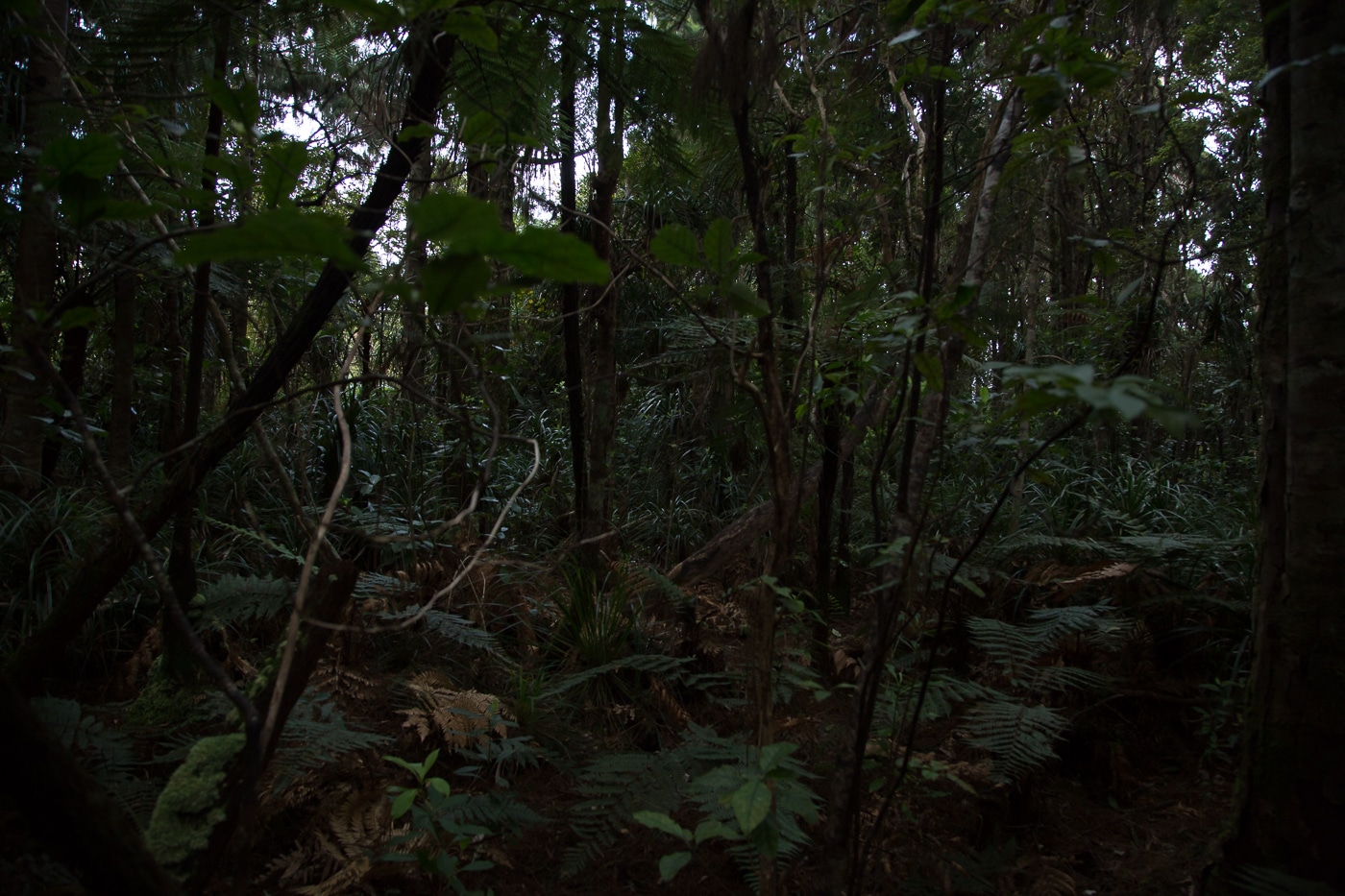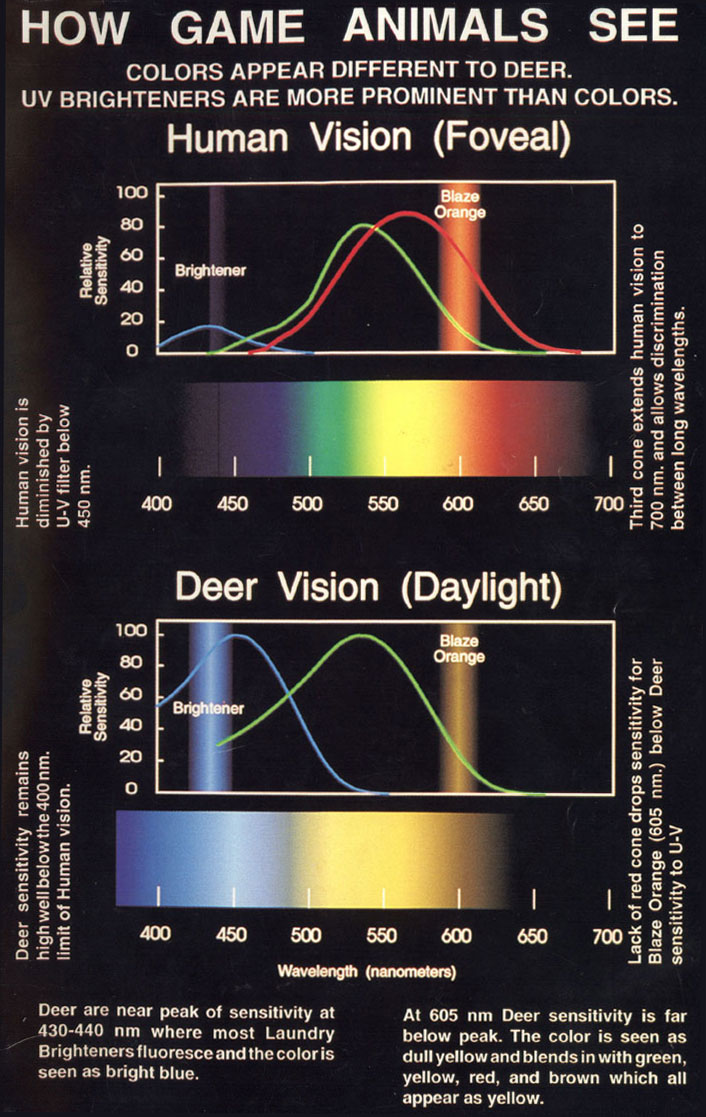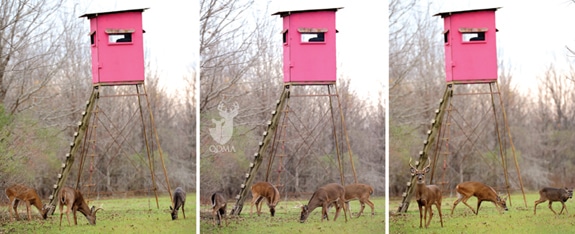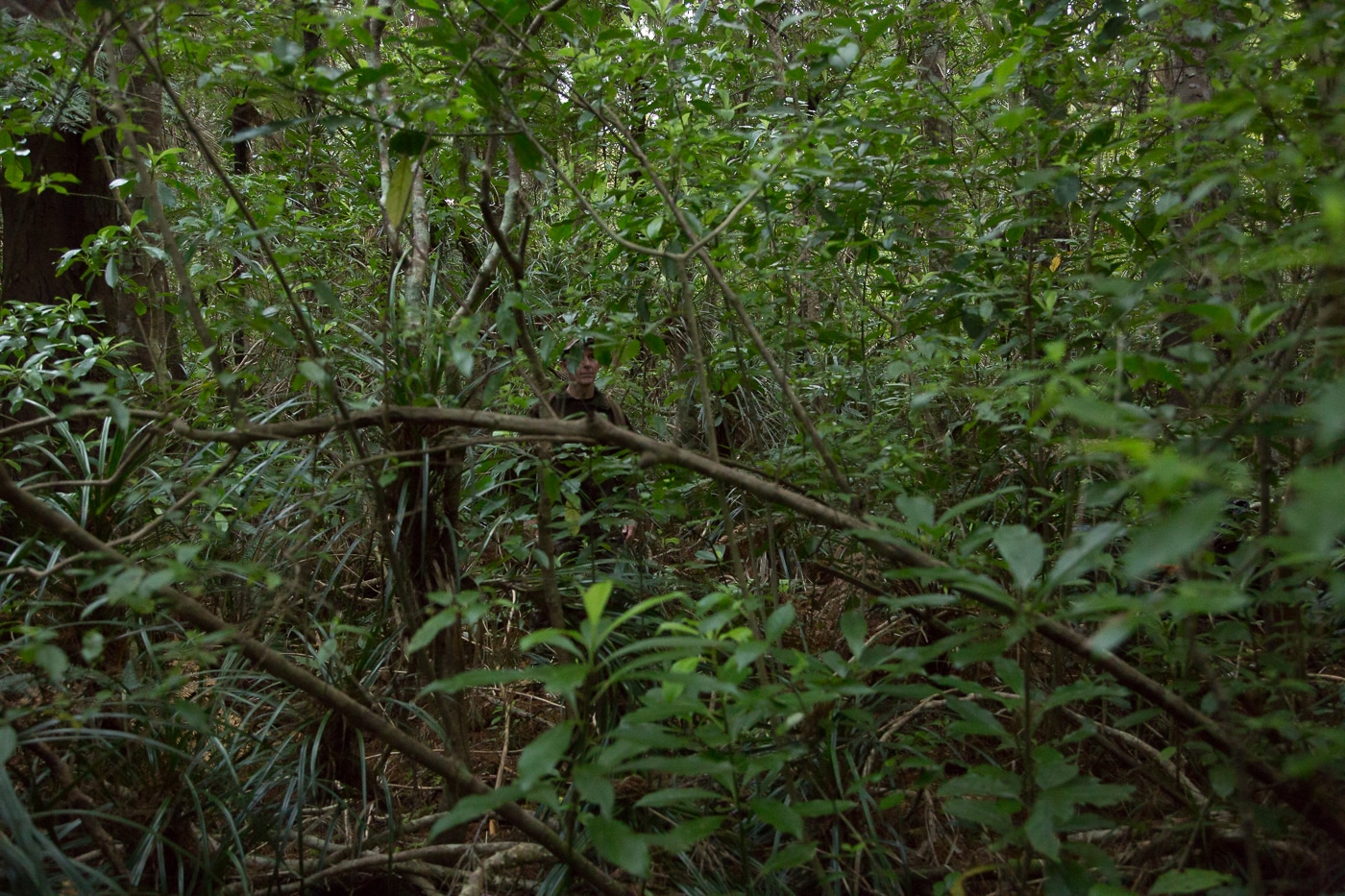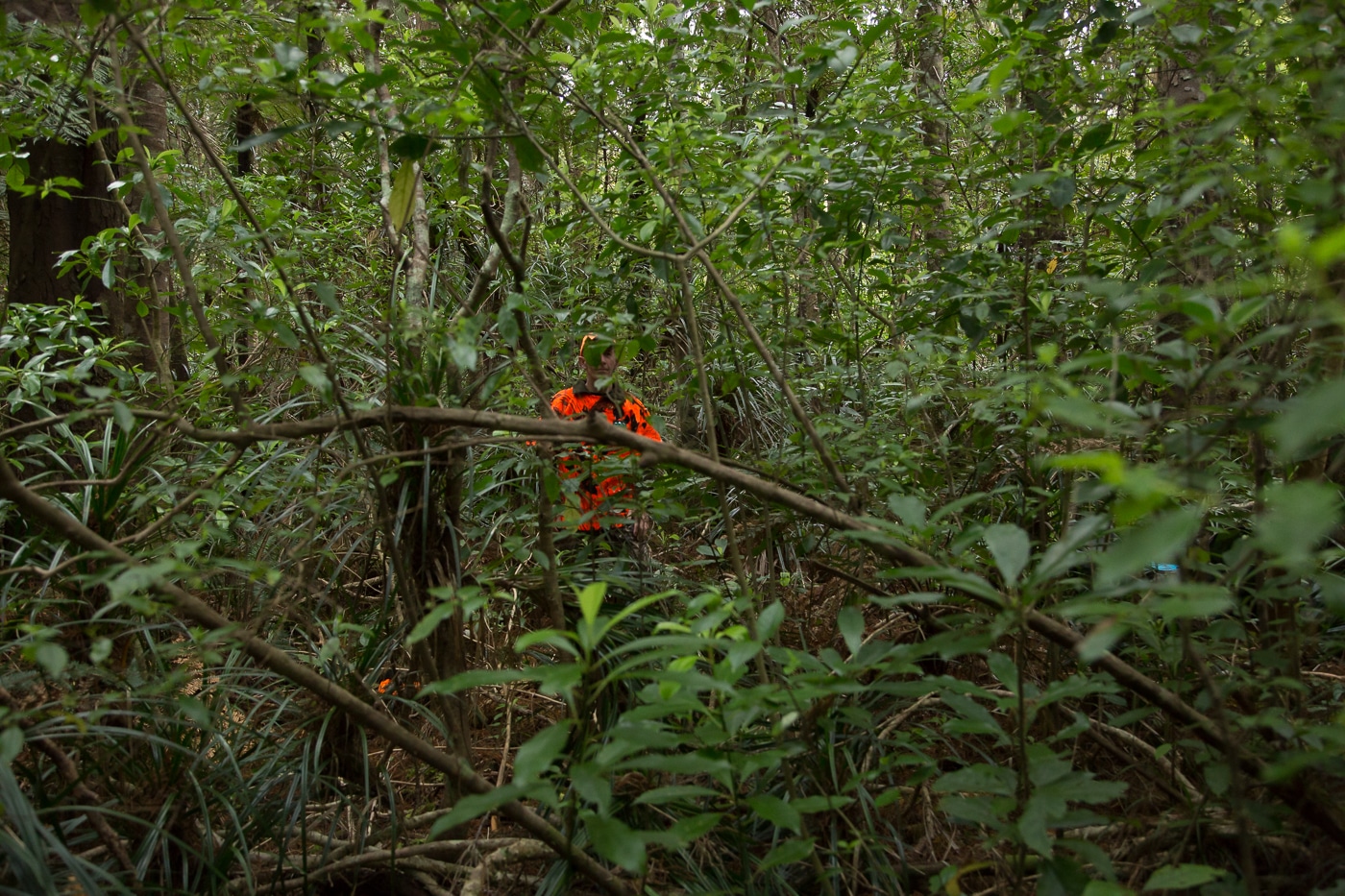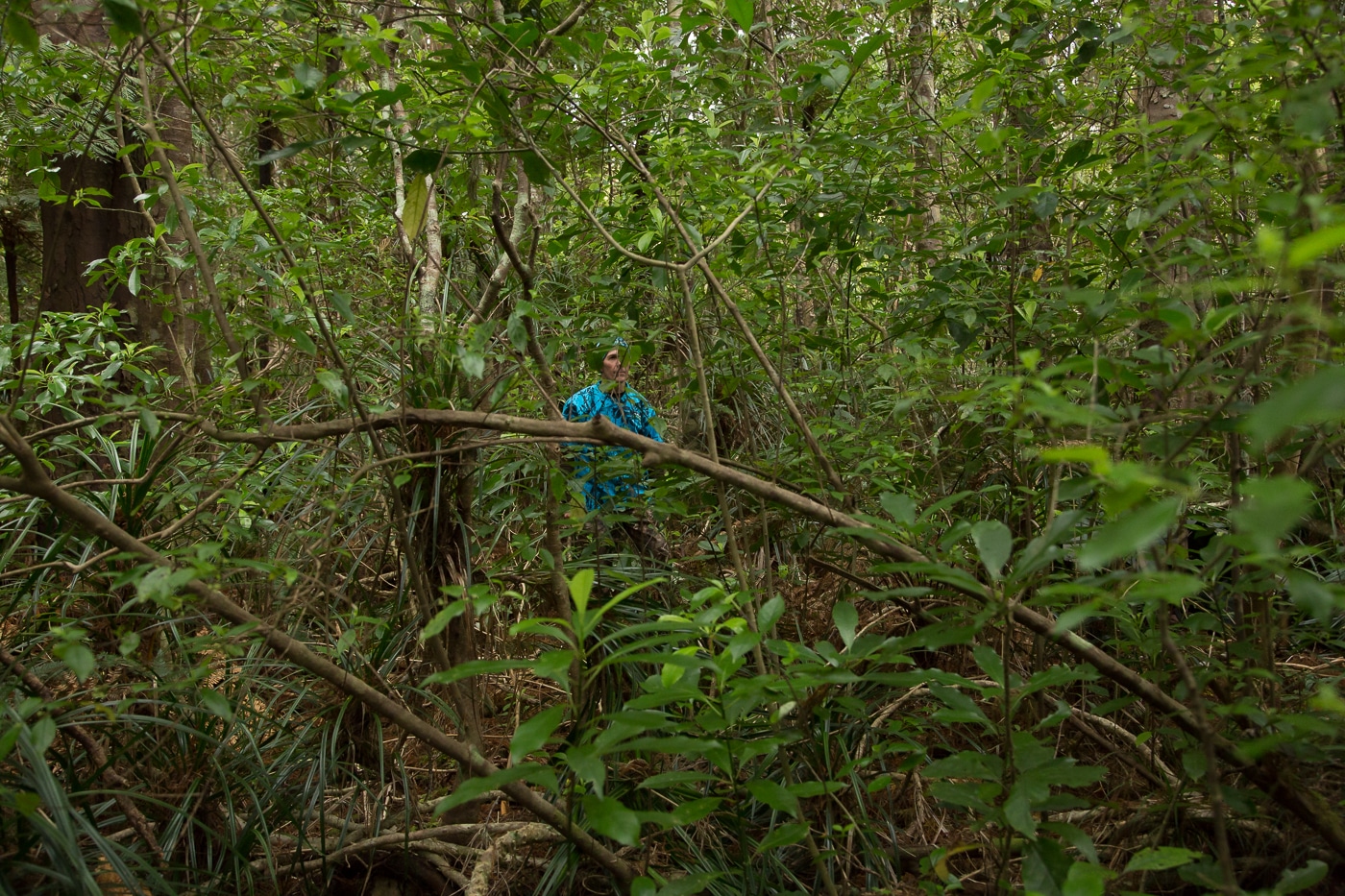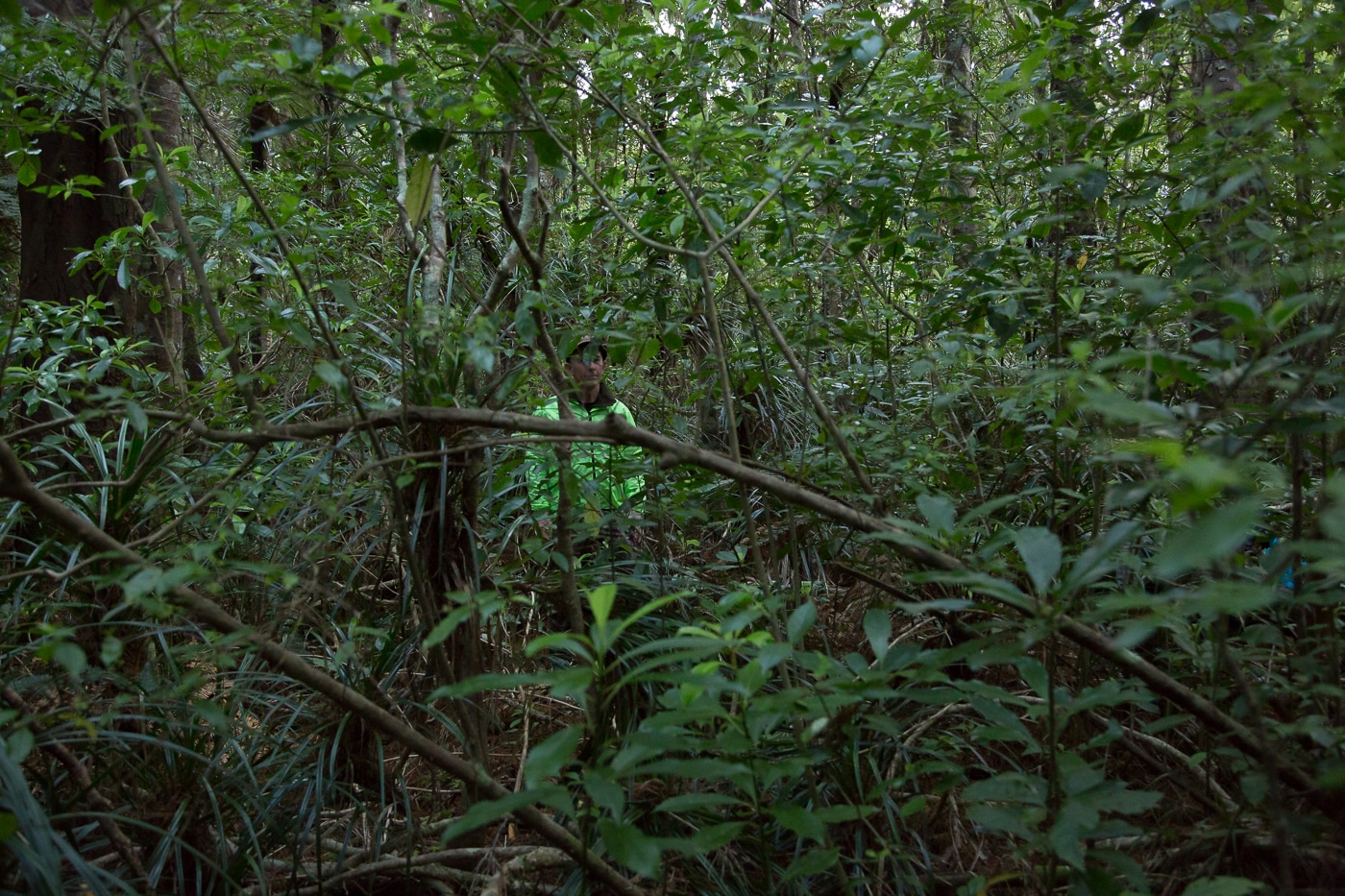As hunters, we need to be sure we are doing everything we can to both identify and be identified by each other in the bush. Sadly, with the exception of 2017, every year, we have had an incident when one hunter has failed to identify their target and shot and killed another hunter.
While it’s important to note, the overall trend of incidents has been in steady decline, every incident is still a tragedy that shouldn’t have happened, and anything we can do to prevent further incidents should be considered and if worthwhile, implemented. Such is the case of hunters wearing Blaze in the bush.
For a long time, the only option for hi-vis (or blaze) was to either wear your work vest, or, a selection of blaze orange clothing made available by hunting companies. In the last couple of years though, this has changed.

Blue, Pink, fashion choices.
The Blaze Blue was added for two reasons. In 2003, Joe Green published a report entitled “To Hunt and Return – developing safe hunting practices” – one of the things this report tried to determine was the most appropriate coloured clothing to wear to be seen in the NZ bush. At the time, blaze orange was the most widely promoted option, but Joe’s research also identified blue as a colour that stood out as well as blaze orange. However, studies of deer vision indicate that they have a higher sensitivity to blue and ultraviolet, as they cannot see red or orange.
More Choice
The second reason is choice. For some hunters, Orange Blaze Camouflage is just still ‘uncool’ – I don’t know if it’s fear of looking like a council worker, male ego or vanity, believing that deer can see blaze orange and so prefer to wearing any camo to avoid being seen by deer and other hunters – but some guys still have a problem putting on something as simple as a hi-vis safety vest. Blue is now another option for people who cannot bring themselves to wear blaze orange and are not concerned by the fact that deer may be able to see them more readily in the bush. Then for the ladies, there is blaze pink, so most of the preferences are covered.
With this in mind, I enlisted the help of Frank Ferguson, Immediate Past President and HUNTS Coordinator for North Auckland Deerstalkers Association, and he was kind enough to spend some time in the bush being photographed in a variety of clothing options. We both share an interest in hunter safety – so it was good to get feedback from a man way more experienced in hunting than myself.
Identifying your target becomes particularly important at a distance. Especially at twilight – when many animals are most active. When he didn’t have Blaze Camouflage on, the only way I was able to tell Frank was there at all was when he waved his hand. If I didn’t know he was there and he wasn’t wearing blaze, could I have identified him as a person? Nope.
There it is! Shoot it!
Stag or buck fever might best be described as a high expectation of seeing or shooting a deer, such that the excitement and emotion overrides rational thinking – Joe Green, To Hunt and Return, 2003, page 3
Seeing someone in the bush wearing army camo is very difficult unless they move, whereas wearing blaze orange or blue allows rapid positive identification. So it is often movement that first catches your eye. A sudden rustle or flash of colour in the bushes nearby, what are you going to do? A responsible hunter is going to stop. Take a deep breath, and, as per the Arms Code: Identify your target, beyond all doubt. It always remains the shooters responsibility to correctly identify what they are shooting at, regardless of what other hunters are wearing. Movement, colour, sound and shape can all deceive you. Even a small part of a deer is not enough to shoot at, you must be absolutely certain before you pull the trigger. Remember you must also be able to see enough of the deer, preferably the head, neck and shoulder, to be able to place the bullet in a vital area for a quick, humane kill.
In Rod & Rifle, Dave Sharp suggests two great methods of ensuring you take the time to positively identify your target. Ask, what exactly is this deer? Is it a Hind? Red or Sika? How old is it? Winter Coat? In Velvet? Whatever. Get in the habit of taking the time to identify exactly the breed and condition of what you are about to fire at. You should know before you pull the trigger. Then ask, where am I shooting it?
You need to know not only what you are shooting at, but where. Is the patch of brown its rump? Is it shoulder? If you don’t already understand the importance of avoiding a gut shot, put down the firearm, and get yourself some training – the Deerstalkers HUNTS Course is a great place to start.
Or is it potentially a brown cap of a fellow hunter? There is, of course, another great question to be asking yourself in this situation – would a deer be wearing Blaze Clothing?
Cut to the chase; can deer see Blaze Camouflage?
Humans have three classes of cone photoreceptors which are the basis of trichromatic (literally three-color) vision. In humans this three-receptor system confers excellent color vision. Humans can distinguish small differences in wavelength across the spectrum. In contrast, only two classes of cone photoreceptors were detected in deer. Deer can have no better than dichromatic (two-color) vision. Thus, the color vision capacities of deer are, at best, limited compared to humans. The two classes of cones in deer allow for the ability to see color differences between short and mid-range wavelength light, e.g., blue and yellow, however, they lack the photoreceptor basis for seeing differences in the color of objects that reflect middle-to-long wavelength light, e.g., yellow-green, green, yellow, orange, and red. – Kurt von Besser, How Game Animals See & Smell
Well, according to the science, deer can’t see orange but can see blue. Looking at it another way, compared to humans, deer are colour-blind. In ‘human terms’ – they suffer from deuteranopia, “lacking the long-wavelength-sensitive retinal cones”, hence they cannot distinguish orange and red.
What is very interesting is that, if we use the example of deuteranopia, then photo editing software, such as Adobe’s Photoshop, can be used to simulate the condition. Giving us an interesting insight into how deer may perceive the world.
Can you spot the hunter?
Slide 1 is how an average, non-colour-blind human will see the various clothing options. Slide 2, deuteranopia, is considered to be close to how many game animals see colour. Slide 3 is a combination of deuteranopia and blurriness – approximating deer vision. I say approximately because it’s very hard to get a deer to talk about their eyesight.
Arguably, the Deer’s eye is not capable of seeing orange, and its brain is incapable of seeing almost any colour at distance, relying instead on detecting movement – Joe Green, To Hunt and Return, 2003, page 5
Ok then. Orange Blaze Camouflage it is.
Well, not so fast. That is only half the story.
In essence, deer do not have 20/20 vision. Deer vision is likely to be significantly less acute, comparable to a human who has maybe 20/40 vision. As anyone with glasses can tell you, discerning objects with less visual acuity than 20/20 vision is not all that easy. For this reason alone, it is advantageous for hunters to hold still and add camouflage to their hunting gear.
This would suggest, that colour alone isn’t going to be enough to alert or concern a deer – after all, why would it? If blue was an instant panic button that deer associated with danger, every time they saw it they would start running. In fact deer have poor vision compared to a human, but they have a highly developed ability to detect movement and identify the body outline of predators and humans from their surroundings. This combined with an exceptional sense of hearing and smell has ensured their survival and allowed them to evade many a hunter. – Isa C, The Outdoor Experience

While a deer may not have as good as vision as ours, they are just as, if not more, sensitive to movement as we are. Take my first set of photos for example – with Frank in camo, I couldn’t see him, even though I thought I knew exactly where he was. Yet as soon as I asked him to wave – I could pinpoint him. This is much the same as a deer. You could be dressed up in a full Ghillie suit, but as soon as the animal sees you move they can detect your outline and they are gone. More than one story has been told by hunters of managing to stay still as a statue, and having animals come in close without issue, only to be spooked as soon as they tried to raise the rifle to shoot.
Here is a funny, related article – maybe we should be seeing more pink camo being used in NZ? The deer don’t seem to care much about the colour. Or do you think it’s the fact they can’t smell human, nor see any movement? Or could it be that deer do not expect danger from above, so they seldom look up?
Even in plain clothes, if a hunter holds still and breaks up his silhouette and eyes, some deer may approach within yards of him in their line of sight without recognizing him as a threat. However, in the same conditions, a hunter can be a 100 yards away, move his hand and be spotted by deer. That’s because their ability to sense motion and focus on the moving object is still quite effective, similar to T-Rex in Jurassic Park, only not as extreme (or scary). – Isa C, The Outdoor Experience
So, while a deer can see blue, that doesn’t automatically mean it’s going to scare them away.
How about UV Brighteners? Is that why hi-vis glows?
Studies have suggested that game animals can see much further into the short wavelength end of the colour spectrum than we can. Meaning they are able to see ultraviolet light and have far better nocturnal vision than we do. This tends to indicate that deer can detect ultraviolet light as a source of elimination and some things that we cannot see, may appear to have a distinct glow to a deer. UV Brighteners, which are put into clothing (even hunting clothing) to enhance the colours of the fabric, essentially works like a beacon to the eyes of these animals.
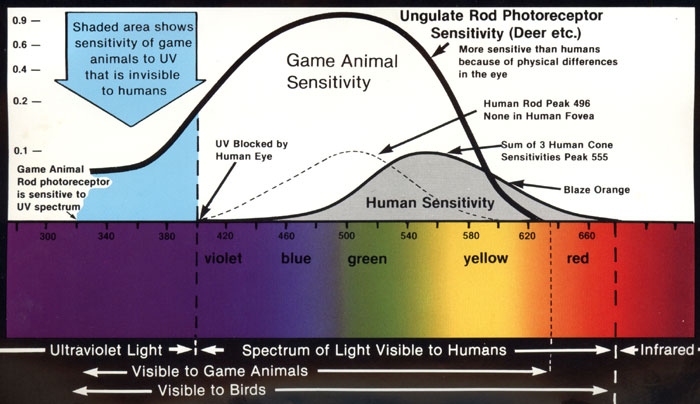
It is argued that UV treated clothing, be it Blaze Orange or Camouflage, are equally visible to deer – due to the UV brighteners, not the colour. However, if you remove the UV brightener then the orange remains more visible to humans and less visible to deer. There are readily available washing products that contain no UV brighteners (Sports Wash) and others that remove UV brighteners (UV Killer). One thing I have thought about, that I will try to test at a later stage – is whether you get any difference in recognition between new blaze, which basically glows, and old, faded blaze. Certainly, there is concern that people are wearing blaze too long and once faded, the orange becomes much closer to a natural orange or even yellow. Sometimes approaching the colour of a deer in certain light conditions. Certainly, the difference between new and old blaze is readily apparent and should be replaced for your own safety.
So what to wear?
Well, I can tell you what not to wear – subdued colours. It’s all very well being concerned by some vague notion that a deer is going to bolt because it doesn’t like your choice of the colour palette but it is more likely to take off because it heard, smelt or saw you coming long before you spotted it. So that being the case, doesn’t it make more sense to worry about not getting mistaken for something that other hunters can take a shot at.
A couple of observations from the day
- The blaze camouflage in either orange or blue sticks out more than traditional subdued colours – black, green, brown, all equally disappear quickly in dense bush.
- The Stoney Creek Beanie and Ridgeline Bomber both have large areas of black – which detracts from the effect of the blaze.
- The darker it gets (think: twilight) – the harder it was to see blue – whereas the orange still seems to stand out.
- Older blaze (and fluoro) loses a lot of its ‘glow’.
- You don’t have to be very far apart to lose track of the other party members in dense NZ bush. Blaze makes it much easier to locate them, as well as other hunters.
Too long, did not read. Just tell me what to wear.
Actually, how about I tell you to learn a bit of patience and realise that that same attitude is what can lead to misidentification in hunting?
Do whatever you can to make yourself stand out from the environment and the game you are hunting. There are now several options in the marketplace – from blaze orange and blue, to pink, which I am sure, if you are a fairly large male wearing fluoro pink in the bush, you are going to stand out. You might prefer a t-shirt, or a vest, or a mesh shirt over your normal top, but no matter what you are wearing – here a just a few things to consider:
- If it is starting to fade, throw it out. Faded blaze is dangerous – if it is faded enough then blaze orange can start looking like a deer. New blaze is hard to mistake. Treat yourself to a new top each season – it’s worth it.
- Wear an adequate area of blaze, preferably a cap and a vest as a minimum, that can be worn on the outside of whatever else you are wearing. Don’t put on a blaze top then cover it up with a pack, rain jacket or anything else – that’s why I like the long sleeve mesh top from Ridgeline – it goes over everything else, and the long sleeves stand out even when wearing a pack.
- Got an animal? Excellent – carry some hi-vis fabric or a spare vest to wrap over the carcass if you intend to carry it out. Deer don’t generally wear hi-vis – so it will reduce the risk of your load getting mistaken for live game.
- Don’t forget your dog. Get some orange ribbon – tie it around its neck. Helps you keep track of him, as well as others.
- Just wear it. Be a responsible hunter to protect yourself and help others rapidly identify you as a hunter and not a deer. Think of your partner, children, family and friends who want you to come home safely. Take all practicable steps to keep yourself safe, it is the best insurance you can get.
- Remember, regardless of what the other hunter is wearing YOU MUST IDENTIFY YOUR TARGET beyond all doubt. No meat is better than no mate!

Huge thanks to Frank for his contribution as a technical reference for this article. His knowledge and experience were very helpful. As well as being a willing model for the photographs!




